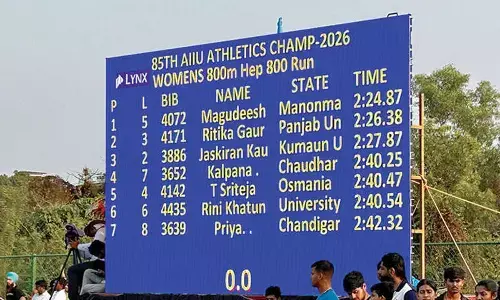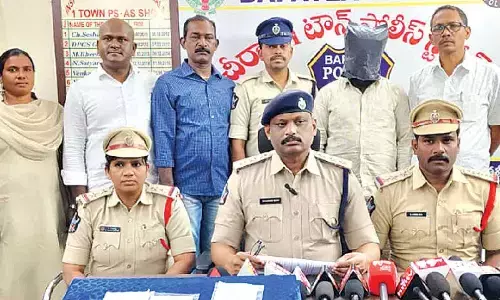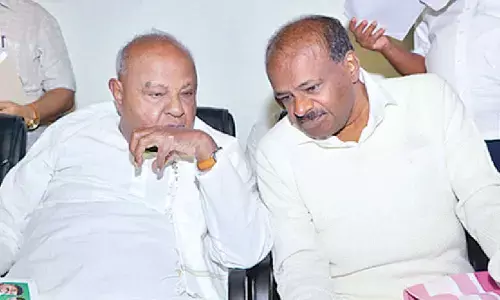The land of three states

The region of Morasunadu is spread across the three states of Andhra Pradesh, Karnataka and Tamil Nadu. Though it was divided into three fragments, it has a unique culture and the creative geniuses of the place found expression in different languages, as it is seen in the anthology of short stories, ‘Morasunadu Kathalu’
A few months back I went to Kolar, a town in Karnataka state, closer to the border of Andhra Pradesh, to attend a book releasing function. Let me tell you that it was a Telugu book, ‘Morasunaadu Kathalu’ comprising of 30 short stories, out of which 10 are by Telugu writers, 10 are Kannada stories translated into Telugu and 10 are Telugu stories written by writers living in Tamil Nadu. On the whole it is an anthology by the writers of a region called Morasunadu. It was released in Kolar as it happened to be at the heart of Morasunadu.
Where is this Morasunadu? The three states, Andhra Pradesh, Tamil Nadu and Karnataka, meet here. The region is spread in the three states. But it has a unique culture of its own and though it was divided into three fragments, the creative genius of the place found expression in different languages. Thus, ‘Morasunadu Kathalu’ is the result of a path breaking effort to reflect the oneness of a geographical region. It is edited by Sa Vem Ramesh, a noted Telugu short story writer and Sa Raghunadha, a reputed Kannada writer.
It is inevitable to divide the country into states for the convenience of governance. But when the language is taken as the basis for such division, many unforeseen mishaps which hamper the natural development of the mother tongue take place. The minorities speaking the language other than the official language of the state remain outsider-insiders forever. It is natural that the language used for the government mechanism gains importance and the other languages lose their original prestige. The fate of Sanskrit after the advent of Prakrit and the plight of Prakrit after the rise of vernacular languages in India are the monumental examples to it. But the life of a specific region remains the same in spite of the political bifurcations. A book like ‘Morasunadu Kathalu’ not only illustrates the oneness of the region but also strengthens the national integration of a country like India.
At present the word ‘morasu’ is found in association with a caste called Morasu Vakkalaga only. The famous fort in Hoskote in Karnataka is called Morasunadu Kota even now. ‘Moradu’, a Kannada word closer to ‘Morasu’ means a place full of hillocks and boulders. It also means a land of gravel. The entire Morasunadu is a land of red gravel.
Morasunadu which appears in the inscriptions of the 9th century became popular after its reference in the fugitive verses ( Chatu Padyam) of poet Srinadha of 15th century. But Srinadha, who never praised any land except his native place Nellore, questioned how the permissive god Brahma created a Morasunadu of awkward turbans, stooped swords, soiled saris, ragi balls, sour green curries, ugly dresses, winking glances and deranged languages. Morasunadu includes Kolar, Chikkaballapur and Benguluru districts of Karnataka, Kuppam, Pungunur and Hindupur mandals of Andhra Pradesh and Hosur and Denkanikota Taluqs and Vemanapalli firka in Karnataka. Some places adjacent to these places are also included into ‘Morasunadu’ by a few.
As it is a place situated at the height of about 2500 feet above the sea level, summer is also a cool and pleasant season here. The minimum temperature of this region of the year is 13 degrees centigrade and the maximum is 35 degrees. The famous Horsley hills and Nandi hills are situated in it. The rivers; Penna, Paapaagni , Chithravathi , Sanath Kumara , Paaleru and Vanneru are born in and flow through the region. Ragi (Black millet), Anumulu and Verrinoogulu (Valasalu) are the popular crops here. According to the census, 50% of the people here are Telugus, 30% are Tamilians and 10% are Kannadigas. Though Hosur has becomes an industrial town and Bengaluru is acclaimed as the Silicon Valley, the people of the region have a firm base for agriculture.
Bengaluru is a typical Morasunadu city reflecting all of its characteristic features. Kempagouda the founder of Bengaluru was also a Telugu king of the 16th century. The official language of the Gouda kings was Telugu and Kempagouda wrote a Yakshagana entitled Ganga Gouri Sallapam in Telugu. The Gouda kings of Yelhanka belong to the caste of Morasu vakkaliga. An anecdote describing the origin of the name Bengaluru recounts that Second Ballala, the Hoyasala king of the 11th century came to that place for hunting and lost his way.
Then he reached a hut of an old woman who served him a curry made of the vegetable, ladyfingers. The king gave the place the name ‘Village of Benda’ as a token of his gratitude. As benda is the same word for the vegetable in Kannada as well as in Telugu, it asserts the affinity between these two languages. Now Bengaluru is swollen into a city engulfing the small villages. But we can find the same old village atmosphere even now, in these villages that were annexed by the city. The people of these places still live in Mangalore tiled (red and curved tiles) houses, retain their animal husbandries and give more importance to the spiritual values than to the worldly aspirations.
So the people of Morasunaadu resent the derogatory remarks of Srinadha on their place. They confidently declare that their place is distinguished for its marigold flowers, horse gram and anapa curries, ragi balls (Black millet), animal husbandries, cool atmosphere, sustained agriculture (unhampered either by the draughts or the tempests) and great folk arts. The mother tongue of many of the writers included in Morasunaadu Kathalu is Telugu though they wrote in a fraternal language; like Late K.V.Iyer, a pioneer of Kannada short story whose mother tongue was Tamil.
Venkatadu, the main character in ‘Venkatagaani Pendlaamu’, a story in ‘Morasunaadu Kathalu’ written by Masthi Venkatesa Iyengar, the Jnanpith award winner of Kannada literature, is a person who goes to Bengaluru from a village near Tirupati. The narrator relates that he spoke to him in Telugu as he hails from Chinthamani, a town in Karnataka where majority of people speak Telugu. Raghunadha, a contemporary writer living in Srinivasapura in Kolar district wrote Telugannada stories i.e.; stories in a mixture of Telugu and Kannada languages. Renowned Telugu short story writers R.S.Sudarshanam, R. Vasundhara Devi and Vallampati Venkatasubbiah also belong to this region.
All the writers who attended the book release function from the three states were emotional as it was very much like a family reunion. They found their echoes in each other’s works and they began to search for their ancestral roots. They voluntarily took a resolution to get the same book translated into Tamil and Kannada to be more intimate here afterwards. They charted out plans to meet periodically to strengthen their bondages and to rededicate themselves to their unique culture. They realised that an awareness of such a regionalism will enhance the spirit of National integration in a multi-diverse country like India. That we are all the branches of the same tree is amply established in the obvious similarity in the life reflected in the works of the different languages. ‘Morasunaadu Kathalu’ is not just the first step in the direction but also a firm step.
(The writer is a bilingual short story writer,
novelist and poet, who writes in Telugu and
English)

















